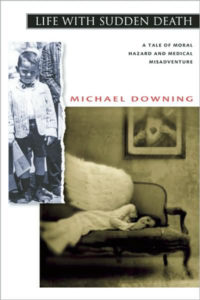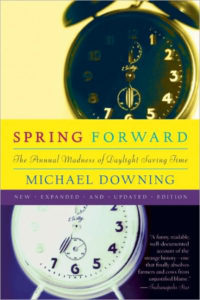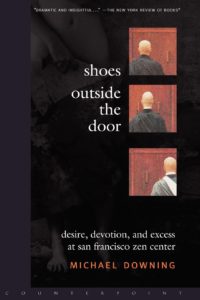Life with Sudden Death

Read MoreOverview
When I was forty-five years old, I was identified as a person at risk. A sample of my DNA revealed an inherited genetic mutation. Ironically, because I was in excellent health according to all conventional measures of cardiovascular fitness, I was told that the first symptom I would experience would be sudden death—an unforeseeable, instant, and total failure of the system that sustains my heart beat.
I was alone at home when a nurse from the Harvard genetics lab called with the bad news. It was as if the story of my life had been cut in half. That genetic diagnosis suddenly illuminated my past, and it considerably darkened my future.
For the first time in my life, I felt like my father’s son. I was the youngest of nine children, and my father had died—suddenly, inexplicably—when I was three. He was forty-four. We’d understood this as god’s will. We were good Catholics. Years later, one of my brothers died—suddenly, inexplicably—when he was fifty-three. Again, the family diagnosis was god’s will.
I thought I was safe. I was so clearly and singularly identified with my mother’s side of the family in appearance, temperament, and family lore that I believed a long life was my birthright. But when my phone call with that nurse ended, I realized my inherited sense of self was a fiction.
And that’s when I lost control of the story of my life.
As I entered the strange and secretive world of modern medicine, I really thought I was simply choosing to prevent my sudden death. But the medical intervention to prevent my sudden death almost killed me—more than once. Five years, four surgeries, and three implanted devices later, I see that I was effectively adopted by a close-knit family of genetic researchers, clinicians and surgeons, and medical-device manufacturers. I knew I was dependent on them, and I soon learned that they were not entirely dependable. But did I really trust my own version of the story?
I wrote Life with Sudden Death to answer a simple question: Who has the authority to tell the story of your life?
Spring Forward

Read MoreOverview
It was a Saturday night in October. I knew I was supposed to wait until 2 a.m. on Sunday, but I was tired, and no one else was likely to consult the kitchen clock before sunrise, so I turned back the time by one hour. And I realized I had no idea what I was doing.
And then I got obsessed with the uncanny idea that we can save energy, lives, and maybe our very souls with this loopy and entirely unscientific routine of falsifying our clocks, which has become the most persistent political controversy in American history.
Spring Forward is a social history and a true-to-life social comedy with Congress in the starring role, surrounded by a supporting cast of opportunistic ministers, movie moguls, stockbrokers, labor leaders, sports fanatics, and railroad execs. And it is a portrait of public policy in America—a boiling stew of unsubstantiated science, profiteering masked as piety, and mysteriously shifting time-zone boundaries.
For starters: Don’t blame the farmers. And don’t expect to save anything with daylight saving, which is actually a fantastically effective retail-spending plan.
Shoes Outside the Door

Read MoreOverview
Book Sense Pick
The story of Shoes Outside the Door
When I first heard about Zen Center, I was astonished that the remarkable history of the first Buddhist monastery outside of Asia was unwritten. I began to ask why no one had told this story. “I’m living proof of why you better not speak out,” explained one ordained Zen priest. “The degree to which I’ve been scapegoated publicly was most effective in keeping everyone else quiet.”
In 1959, a Japanese priest started to practice Zen in America with a few students, poets, painters, and drifters, and by 1980 the San Francisco Zen Center had become huge and hugely successful, accruing wealth, property, and prestige. And its exquisite aesthetics were tinged with the glamour of celebrity. Zen Center’s real estate holdings included the Tassajara Hot Springs near Big Sur, Green Gulch Farm in Marin County, a clothing company, and a bakery. Longtime member Ed Brown’s Tassajara Bread Book was riding the bestseller lists, and Zen Center’s popular upscale vegetarian restaurant, Green’s, was inspiring a generation of cooks and chefs. Zen students found themselves working as waitresses and busboys, serving dinner to Ken Kesey, the Dalai Lama, Stewart Brand, Gregory Bateson, and then-Governor Jerry Brown.
In 1983, this hot core of the counterculture experienced a meltdown. And the most prominent community of Buddhists in the West found themselves at the vanguard of a cultural revolt against spiritual authority.
For more than three years, I researched this story. Ultimately, I interviewed more than a hundred people associated with Zen Center. I spent months reading everything from personal diaries and letters to meeting minutes and budgets as the first non-member given access to the Zen Center archives. And I carried with me the words of one of the first young men to practice at Zen Center: “Everyone was desperate,” he told me. “The quality of practice then—it was like being in the catacombs. We were fugitive heretics—junkies, prostitutes, screwed-up adolescents, and runaways—and most of us were too young to know what to do with the serious life experiences we’d had in the world.”